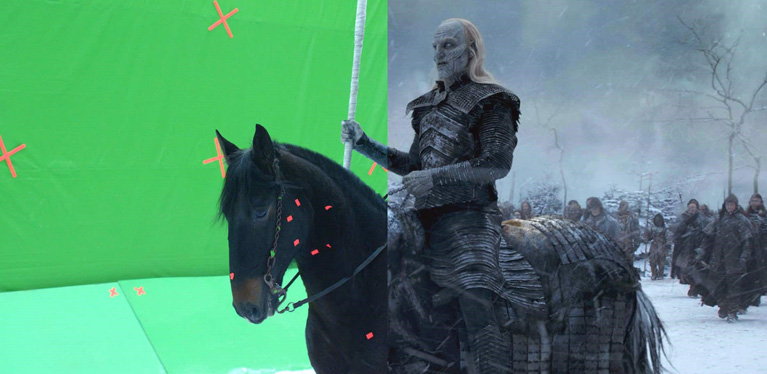As an aspiring VFX Artist, you must have seen tons of behind-the-scenes footage of movies that use advanced VFX techniques to create fascinating visuals for the audience. Something common in all of them is the usage of blue and green screens. Sci-fi, period and fantasy genre movies use them all the time. Before we dive into it further, first let’s understand the concept of chroma keying. It is the process of shooting video on a solid colour backdrop which is later replaced by the required footage or CGI. It isn’t strictly a post-production process as shooting on a screen on set is the first part of the entire workflow.
But why only blue or green? Blue and green are on the opposite ends of the color spectrum. Red and orange which correspond to the skin tones, so by using blue or green you have lesser unwanted effects when keying a person on screen.
Should you choose the blue or the green screen for chroma key compositing? This essentially depends on the lighting of scene to be shot. If it’s a daytime background, then green in the ideal choice as it blends seamlessly. Blue as you’d have guessed is best for replicating nighttime. Apart from that the choice actually isn’t that simple.
Blue is a higher frequency colour than green and thus gives a more distinct keyed image with greater contrast.
The blue screen is also the most common choice of the compositor as it has less depth than green screen and so it does not stand out in the real world. The blue screen can be created using silk or fine fabric coated with an emulsion of fine particles of a light reflecting material. Most people like to use velvet for this purpose, but fabric such as muslin can also serve as a good option.
Talking about the counterpart, green color is processed the cleanest with the most luminance. The result is that you will be able to pull a clean key with the least amount of noise, and often, without a complicated lighting setup. Conversely, because of green’s brightness, it can also lead to more ‘spill,’ meaning the green color may reflect and bleed over on your on-screen talent. It isn’t that big of a problem and one of the easiest ways to avoid it is to ensure distance between the actor and the screen.

Now it may seem as though blue is superior to green, which to some extent is right. But it does have its own downsides too. Blue screen will require twice as much light as green screen thus it’s an expensive choice. This difference in luminosity results in less colour spill than green. You would not want your post production to be messy after all.
In conclusion even though blue gets the upper hand, the green screen is still the most popular choice for chroma key compositing since it’s cheaper and has lesser depth with respect to its surface. Nevertheless, you may need to use both screens in various circumstances. The ideal solution is not just one.
Fascinated with the behind-the-scene intricacies about film-making? You can become an integral part of the process too. Get trained in VFX fundamental and advanced techniques at Arena Animation.
Check out the career courses in VFX here and take the first step ahead in your career pursuit.


Comments